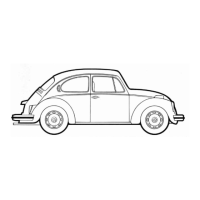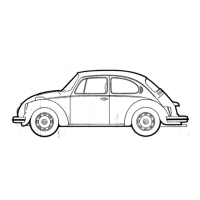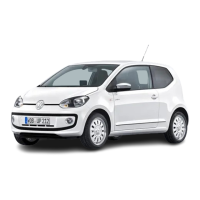P
r
o
t
e
c
t
e
d
b
y
c
o
p
y
r
i
g
h
t
.
C
o
p
y
i
n
g
f
o
r
p
r
i
v
a
t
e
o
r
c
o
m
m
e
r
c
i
a
l
p
u
r
p
o
s
e
s
,
i
n
p
a
r
t
o
r
i
n
w
h
o
l
e
,
i
s
n
o
t
p
e
r
m
i
t
t
e
d
u
n
l
e
s
s
a
u
t
h
o
r
i
s
e
d
b
y
V
o
l
k
s
w
a
g
e
n
A
G
.
V
o
l
k
s
w
a
g
e
n
A
G
d
o
e
s
n
o
t
g
u
a
r
a
n
t
e
e
o
r
a
c
c
e
p
t
a
n
y
l
i
a
b
i
l
i
t
y
w
i
t
h
r
e
s
p
e
c
t
t
o
t
h
e
c
o
r
r
e
c
t
n
e
s
s
o
f
i
n
f
o
r
m
a
t
i
o
n
i
n
t
h
i
s
d
o
c
u
m
e
n
t
.
C
o
p
y
r
i
g
h
t
b
y
V
o
l
k
s
w
a
g
e
n
A
G
.
Note
♦
Volkswagen rejects the use of chemical substances for pur‐
poses of sealing leaks in refrigerant circuits.
♦
Chemical substances used for sealing leaks in refrigerant cir‐
cuits often react with the surrounding air and the humidity
contained within. They cause deposits to build up in the re‐
frigerant circuit (and your air conditioner service station),
valves to malfunction and defects in other components with
which they come into contact. These deposits cannot be com‐
pletely removed from the components (not even by purging).
♦
It is often not possible to detect from the outside whether
chemical substances have been used to seal leaks in the re‐
frigerant circuit. The adhesive label that serves to identify its
use can usually not be found. Therefore, exercise caution
when working on vehicles for which you have no service or
repair record.
♦
Containers or tanks are offered as accessories on the open
market that are designed to separate these chemical substan‐
ces (to seal leaks). Since Volkswagen rejects the use of these
substances, no statement can be made at this point regarding
the effectiveness and separation rate of these filters.
6.1 Leak detection in refrigerant circuit us‐
ing compressed air or nitrogen
Amarok 2011 ➤ , Beetle 2012 ➤ , Bora 1999 ➤ , CC 2010 ➤ , CC 2012 ➤ , ...
Air conditioning system with refrigerant R134a - Edition 10.2014
56 Rep. gr.00 - Technical data

